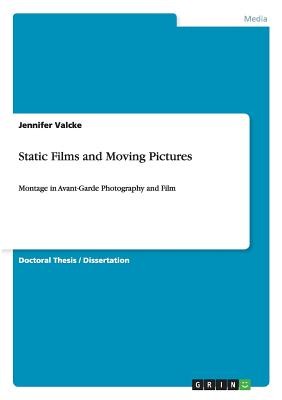
- We will send in 10–14 business days.
- Author: Jennifer Valcke
- Publisher: GRIN Verlag
- Year: 2011
- Pages: 268
- ISBN-10: 3656037205
- ISBN-13: 9783656037200
- Format: 14.8 x 21 x 1.6 cm, softcover
- Language: English
- SAVE -10% with code: EXTRA
Reviews
Description
Doctoral Thesis / Dissertation from the year 2008 in the subject Art - Photography and Film, grade: cum laude, University of Edinburgh, language: English, abstract: Photomontage has more to do with film than with any other art form - they have in common the technique of montage. (Sergei Tretyakov) By considering that photomontage and film use the technique of cutting and gluing as dominant artistic device, and that montage, a technique unifying art and technology for the first time, emerged as a dominant artistic feature of the avant-garde, this thesis will explore the ideological and perceptual implications of its advent in avant-garde art and film. The technological advances of the beginning of the twentieth century, and particularly the advent of photography, allowed avant-garde artists to break free from traditional concepts of artistic production - they dispensed with the old criteria of uniqueness, originality, handicraft and personal style. At a time when many avant-garde artists abruptly ceased to paint, photomontage emerged as the privileged locus for a caesura with traditional art forms. Photomontage envisioned film aesthetics insofar as it combines and juxtaposes images of various perspectival planes and angles (Raoul Hausmann described his early photomontages as "motionless moving pictures"). A corresponding observation can be made on the use of montage in cinema, a technique which crucially underpins the illusion of movement created through the succession of photographic stills. The present thesis will investigate photomontage and film in order to examine the effect technological reproduction played in revolutionising artistic production, perception and ideology - where the technique and philosophy of montage was key.
EXTRA 10 % discount with code: EXTRA
The promotion ends in 19d.12:58:53
The discount code is valid when purchasing from 10 €. Discounts do not stack.
- Author: Jennifer Valcke
- Publisher: GRIN Verlag
- Year: 2011
- Pages: 268
- ISBN-10: 3656037205
- ISBN-13: 9783656037200
- Format: 14.8 x 21 x 1.6 cm, softcover
- Language: English English
Doctoral Thesis / Dissertation from the year 2008 in the subject Art - Photography and Film, grade: cum laude, University of Edinburgh, language: English, abstract: Photomontage has more to do with film than with any other art form - they have in common the technique of montage. (Sergei Tretyakov) By considering that photomontage and film use the technique of cutting and gluing as dominant artistic device, and that montage, a technique unifying art and technology for the first time, emerged as a dominant artistic feature of the avant-garde, this thesis will explore the ideological and perceptual implications of its advent in avant-garde art and film. The technological advances of the beginning of the twentieth century, and particularly the advent of photography, allowed avant-garde artists to break free from traditional concepts of artistic production - they dispensed with the old criteria of uniqueness, originality, handicraft and personal style. At a time when many avant-garde artists abruptly ceased to paint, photomontage emerged as the privileged locus for a caesura with traditional art forms. Photomontage envisioned film aesthetics insofar as it combines and juxtaposes images of various perspectival planes and angles (Raoul Hausmann described his early photomontages as "motionless moving pictures"). A corresponding observation can be made on the use of montage in cinema, a technique which crucially underpins the illusion of movement created through the succession of photographic stills. The present thesis will investigate photomontage and film in order to examine the effect technological reproduction played in revolutionising artistic production, perception and ideology - where the technique and philosophy of montage was key.


Reviews